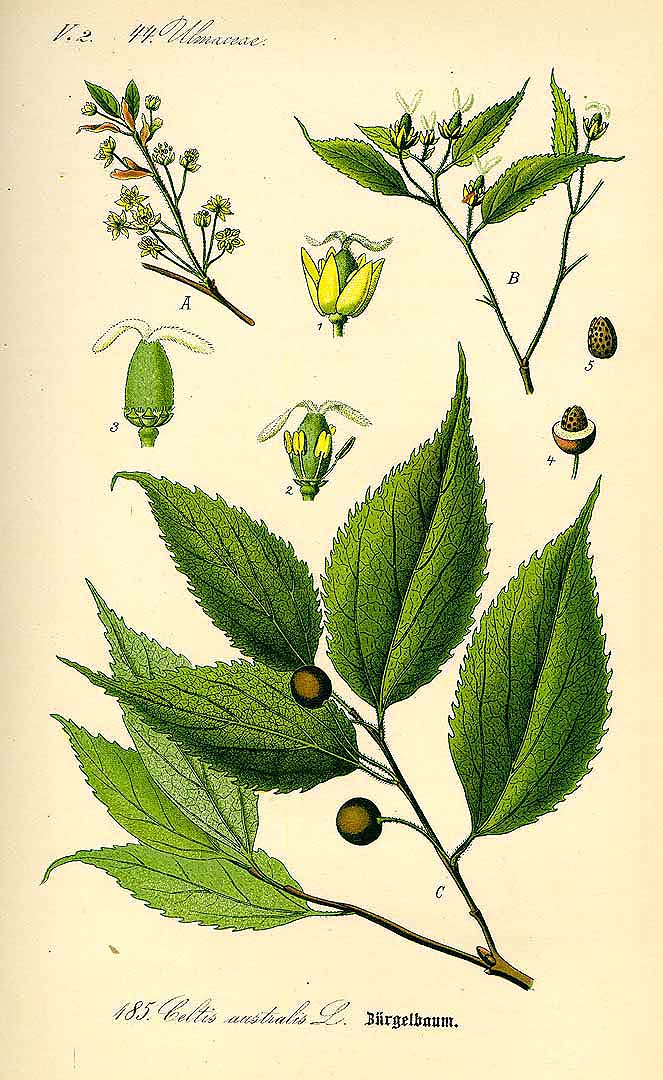! Nouveau site ici !
Vita > Plantae > Magnoliophyta > Magnoliopsida > Urticales >
Cannabaceae > Celtis
Celtis australis
(Micocoulier de provence)

 | *** - **
| *** - **
Vita > Plantae > Magnoliophyta > Magnoliopsida > Urticales >
Cannabaceae > Celtis
Celtis australis
(Micocoulier de provence)

Un arbre qui atteint 25 m de haut. Il perd ses feuilles au cours de l'année. La couronne est arrondie. Le tronc est épais. Les jeunes branches sont duveteuses. L'écorce est lisse et grise. Les feuilles sont ... (traduction automatique)
→suite
⬀
Le  donne accès au menu
donne accès au menu (c'est votre point de repère) 😊 ;
En dessous vous avez la classification, à partir de la vie (Vita, premier rang) jusqu'à la classe au dessus de la plante, dont vous trouvez ensuite le nom scientifique/botanique (latin) puis le nom commun (français), le cas échéant ;
C'est aussi un lien vers la fiche complète (tout comme la ✖, en bas à droite, et le +, en dessous de la description) ;
Vient alors l'illustration (ou ce qui la remplace, en attendant), la comestibilité :
Et en bas
⬂



